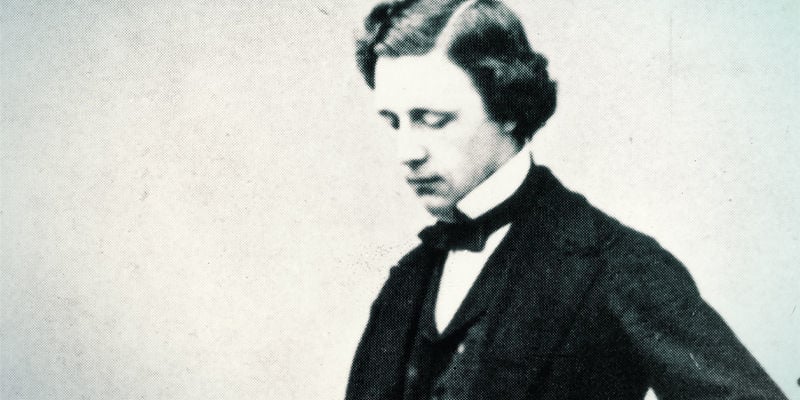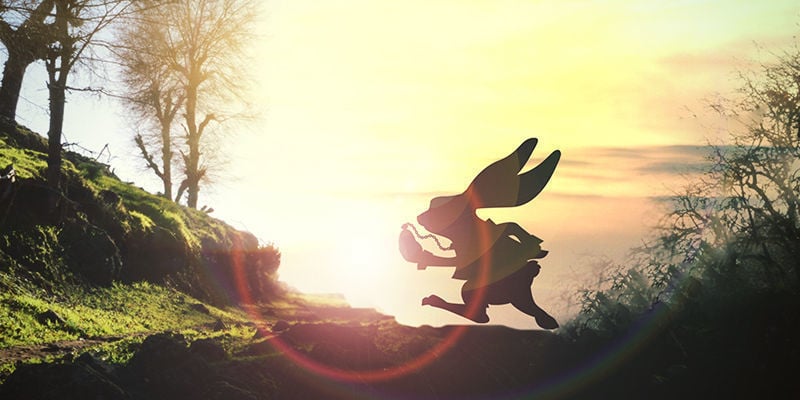
Is Alice In Wonderland Inspired By Psychedelics?
Alice in Wonderland has been connected with psychedelic drugs since the 1960's. And while there have been arguments against such theories, the correlation has nonetheless been established.
By nature, children’s stories are driven by fantasy, centered around mythical creatures, but bear a valuable lesson in the end. With that said, storylines that are such a stretch of the imagination are easily taken in and enjoyed by innocent minds.
But through the discerning mind of an adult, such stories could arguably be a byproduct of the influence of psychedelic drugs. One good example would be the classic book Alice’s Adventures in Wonderland by Lewis Carroll, a tale that revolves around a girl who literally falls down a rabbit hole and finds an entirely new world to explore.
Along the way, she meets other characters and (interestingly) finds herself under the influence of a mushroom. It all ends with Alice waking up, only to find out that her escapades were merely part of an elaborate dream.
Looking at it from a superficial standpoint, it would be easy to conclude that Alice in Wonderland could be inspired by Lewis Carroll’s own adventures with psychedelics. But could it be a far-fetched theory as well?
PSYCHEDELIC THEORY SINCE THE 1960’s
Examining the psychedelic undertones within Alice in Wonderland’s storyline is not a recent phenomenon. Since the 1960’s, the theory that Alice’s adventures may have been inspired by hallucinogens has been pursued by artists and critics alike.
Psychedelic rock band Jefferson Airplane, for example, subliminally pointed it out in their classic 1967 song “White Rabbit.” Take the lyrics that read:
When the men on the chessboard get up
And tell you where to go
And you've just had some kind of mushroom
And your mind is moving low
Go ask Alice, I think she'll know
Readers also managed to connect the dots between how the plot of the story is “disjointed from reality,” and the fact that it was written during an era when opium use was legal. One fan of the Disney film even went as far as to edit every single scene that could be seen as a possible reference to drugs into a 4-minute long Youtube video. Have a look for yourself. Some references may be a bit of a stretch, but one cannot deny that there is enough to wonder about!
MISCONCEPTIONS AND DISAGREEMENTS

Of course, there are individuals who would beg to differ about Alice in Wonderland’s correlation to psychedelic use. According to Dr. Heather Worthington of Cardiff University, there is a strong possibility that people are attributing the story to psychedelics mainly because it was written during an era when its use was rampant, not necessarily because Carroll was actually under the influence of anything.
This exact line of thinking was concurred by New York City museum curator Carolyn Vega, who added that it was never proven that Carroll ever had an experience using LSD or any other hallucinogens at the time of the story’s writing.
It was pointed out through his diaries that Carroll did enjoy the occasional glass of wine, and could possibly have ingested Laudanum, an opiate-infused drug that was readily available for use at the time. But there was no mention whatsoever of him using psychedelics, nor was there evidence that hallucinogens inspired any part of Alice’s adventures.
ALICE IN WONDERLAND’S PSYCHEDELIC RENDITIONS
Despite the major disagreements and contradictions between various experts, many artists still manage to create psychedelic renditions of this children’s classic. One of them aptly titled “Curious Alice” was a public service announcement released in 1971 to rally against drug use and abuse among young people.
Video: Curious Alice
Another version of the story released in 1982 was entitled “Malice in Wonderland.” Unlike Curious Alice, which took on a more straightforward approach, this rendition was released as a more... uhm... artsy and colourful interpretation of the story.
While it did focus on a young girl going down a tunnel, it was presented in a more grotesque and twisted sense that was criticised by people who called it out for supposedly promoting the exploitation of women. Others saw it as a representation of the sexual enslavement of women, mainly based on its artwork involving what appeared to be portrayals of female genitalia in distorted forms. Odd. Very odd.
Video: Malice in Wonderland
If Lewis Carroll was indeed sober when creating his fantastical masterpiece -as sources would suggest - we cannot help but wonder, what state of trippy the story would have reflected, had the author truly been under the influence of magic mushrooms, LSD, or perhaps peyote. Ultimately, Alice in Wonderland will go down as one of the renowned children’s classics, alongside other famous titles like Snow White and the Seven Dwarfs, Sleeping Beauty, and Rapunzel, among others. It can very well still be enjoyed by innocent minds as a story that will help cultivate their imaginative and creative spirit for decades to come.
-
 4 min
5 February 2019
9 (Legal) Drugs That Will Induce a Psychedelic Trip
While most psychedelic substances are considered illegal in many countries, there are a few that buck the trend. From plants of the rain forest used for powerful psychedelic brews, to the mystical...
4 min
5 February 2019
9 (Legal) Drugs That Will Induce a Psychedelic Trip
While most psychedelic substances are considered illegal in many countries, there are a few that buck the trend. From plants of the rain forest used for powerful psychedelic brews, to the mystical...
-
 4 min
8 August 2017
Top 10 Surprising Facts About Psychedelics
Brushing up on history and reading about new developments may be a bit boresome, but, as one might expect, there are quite a few astonishing anecdotes and crazy stories coming from the world of...
4 min
8 August 2017
Top 10 Surprising Facts About Psychedelics
Brushing up on history and reading about new developments may be a bit boresome, but, as one might expect, there are quite a few astonishing anecdotes and crazy stories coming from the world of...
-
 4 min
16 May 2017
Illicit Drugs And Creativity
Illicit drug use has long been associated with more than just abuse. Creatives and entrepreneurial geniuses have long credited certain kinds of drugs for their accomplishments. We take a look at why.
4 min
16 May 2017
Illicit Drugs And Creativity
Illicit drug use has long been associated with more than just abuse. Creatives and entrepreneurial geniuses have long credited certain kinds of drugs for their accomplishments. We take a look at why.













 United States
United States











